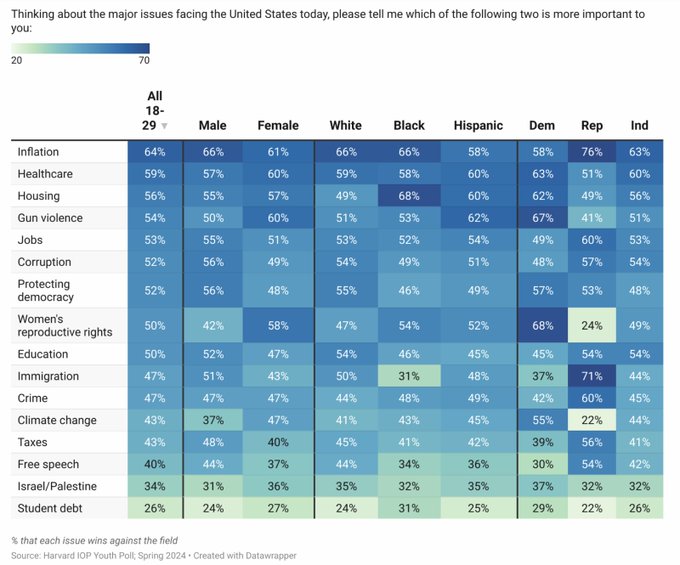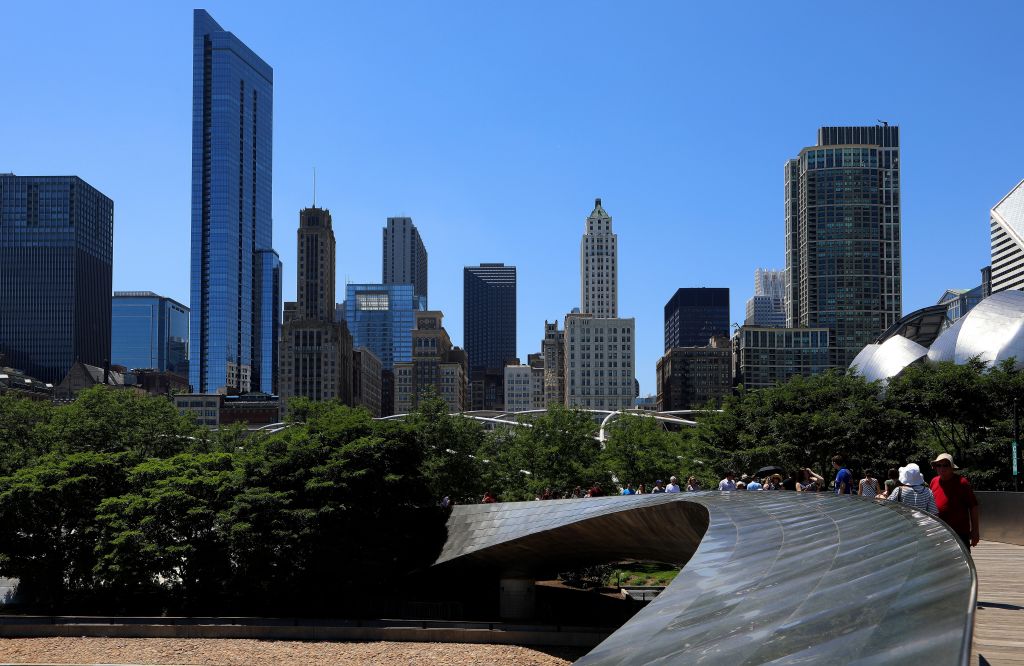Welcome back to Techne! Have you ever heard of purple gold? Until this week, I never knew it existed. But if you have about an hour, I cannot recommend this video from YouTuber NileRed enough. Watch how he explains his process for making the metal from gold and aluminum.
Notes and Quotes
- The Department of Homeland Security announced the establishment of the Artificial Intelligence Safety and Security Board. The 22 inaugural members include OpenAI’s Sam Altman, Anthropic’s Dario Amodei, Nvidia’s Jensen Huang, Microsoft’s Satya Nadella, and Google’s Sundar Pichai, among others
- Scientists have created an ultrathin material dubbed “goldene,” composed of a single layer of gold atoms. The novel substance—produced through a technique adapted from Japanese ironsmiths—could potentially facilitate CO2 conversion and hydrogen generation due to its enhanced chemical reactivity.
- Some recent reports suggest that Apple cut its Vision Pro production due to weak demand, but a thorough look at the evidence shows that Vision Pro supply is capped at around 500,000 units irrespective of demand.
- The German magazine Cicero has uncovered evidence that top Green Party officials hid expert assessments deeming it safe to extend the life of the country's last nuclear power plants, instead choosing to accelerate the longstanding policy of phasing out nuclear energy.
- As the Congressional Review Act deadline looms, federal agencies have been publishing new regulations nearly three times faster than the normal rate.
- Computer scientist Pedro Domingos made an astute observation about AI applications besting human baselines: They “aren’t zooming past us to superintelligence.”

- Austin, Texas, witnessed a 12.5 percent drop in rent prices in December, largely attributed to an increase in housing supply.
- The Harvard Kennedy School released results from polling 18- to 29-year-olds about political issues they care about. Student debt and Israel/Palestine rank at the bottom while inflation and health care mark the top.

- Last Thursday, the Department of Energy announced new rules to speed up the permitting process for power lines, including granting categorical exclusions from environmental review.
- Journalist Matthew Yglesias is optimistic about autonomous vehicles, but he is still realistic about the information problem that the technology has to overcome: “Waymo’s Driver software relies on detailed local mapping to work, which is not how humans drive cars. As a result, you can’t expand Waymo into an arbitrary geography without a significant capital outlay upfront. That’s a real business model challenge for the company …”
- In a big move for AI licensing material, OpenAI struck a deal with the Financial Times to train AI models on archived content.
Human Ambition and Natural Beauty Meet in the City

A couple of weeks ago, the climate writer Robinson Meyer posted something that’s been on my mind. It gets at something fundamental about the infrastructure of American cities.
This is a trite observation but so much of America is so much nicer than it was 10 or 15 years ago. Everyone knows the food is better, but it’s not just that — the parks are bigger and better kept, the airports are updated. Obviously not everywhere yet, but lots of places.
Robinson Meyer is right.
The urban experience in the United States has gotten noticeably better in recent years. Parks have been overhauled, bike lanes have been expanded, airports have been revamped, and new train lines have been built. Yes, infrastructure is difficult to build—but infrastructure has been built. And this century’s urban upgrade has often been driven by the reclamation of old infrastructure.
I vividly remember the fanfare when Millennium Park in Chicago opened in the summer of 2004. Built on top of old railroad lines, Millennium Park was the final piece of the larger Grant Park system, 300-plus acres of structured gardens and parks separating Chicago’s central business district from Lake Michigan. But while Millennium Park upgraded the urban landscape of Chicago, it came at a cost … a big one. At the time of the revamp I lived in Central Illinois and was becoming politically aware, so the park’s final price tag filled me with awe. Despite the millions it got from private donors, the final cost for Millennium Park was nearly triple what was originally planned. Only Chicago could miss the mark by that much.
But later, when I lived in the city, I would walk in the park and be filled with a different kind of awe. It’s best experienced slowly walking the boardwalk of Lurie Garden, a small section of the larger park. Look up and, among the skyline, you’ll see Aqua, the first skyscraper designed by a woman, and the Aeon Building, which bears an uncomfortable resemblance to the Twin Towers. Look at eye level and you’ll see Big Bluestem, Black-eyed Susan, and other plants of the Illinois prairie. Millennium Park, like all great parks, embodies the interplay between human ambition and natural beauty.
In the last 20 years, cities across the United States have gotten considerably more livable by reclaiming defunct railroads and capping highways. Millennium Park is an old train yard. The High Line in New York City, which opened in 2009, is an old section of the New York Central Railroad. The Underline in Miami is a 10-mile linear park that runs underneath the elevated Metrorail system in the city. Klyde Warren Park in downtown Dallas is a 5.2-acre park that was created from capping a freeway, one of several examples of freeway lids. The Atlanta BeltLine, 22 miles of open and planned trails encircling the city, has been made from old railways. Railroad Park is a 19-acre park in the heart of Birmingham, Alabama, that opened in 2010 in a former rail yard. The Gathering Place in Tulsa, Oklahoma, is a 66-acre riverfront park that was stitched from four separate parcels. Domino Park in Brooklyn, New York, was made from an old Domino Sugar Refinery site. Tongva Park and Ken Genser Square in Santa Monica, California, were created in part from a large parking lot. The Presidio Tunnel Tops in San Francisco is a new 14-acre park that offers scenic overlooks, gardens, and trails around the Presidio and the San Francisco Bay shoreline. It was built over Highway 101.
Oftentimes, private funding contributes to these urban upgrades. The Gathering Place only happened because the George Kaiser Family Foundation donated $465 million, the largest of its kind. The 606 in Chicago, an elevated park made from the remnants of a Chicago & Pacific Railroad Company line, was funded through a public-private partnership. Little Island in New York City, an artificial island that boasts a 2.4 acre park, was largely funded by billionaire businessman Barry Diller. The world’s largest wildlife crossing, which will give big cats, coyotes, deer, lizards, snakes, and other creatures safe passage to the Santa Monica Mountains from Los Angeles, is currently being built at a cost of $90 million, most of which is being picked up by private donations.
However, not all new green spaces have been aided by private funding. Take the Schuylkill Banks Boardwalk, a long boardwalk that connects the Schuylkill River Trail southward on land past Locust Street in Philadelphia. It was funded by the city. Alethia Tanner Park in Washington, D.C., was funded by the NoMa Parks Foundation, a creation of the local Business Improvement District (BID). Washington is home to 12 BIDs, which are self-taxing districts established by property owners to enhance particular areas of a city. BIDs have been crucial to the overhaul of Washington’s parks, including the recently revamped Franklin Park.
Of course, cities have their problems. Crime and homelessness have plagued major cities, especially since COVID. But to focus exclusively on these challenges overlooks the substantial improvements that have been made in urban design and livability. Obsolete infrastructure and underutilized areas have been transformed into aesthetically pleasing, functional, and accessible urban spaces. These improvements do not negate the challenges, but they are a step in the right direction. They show that urban areas can still achieve remarkable progress even in the face of adversity.
There has been an undeniable improvement of the urban fabric in recent years. Parks are transforming infill spaces. Some areas have been completely made car-free, like Times Square, while cities have also split countless miles of road to make new or more bike lanes. Yes, building in the United States is often slow and expensive—but when we do build, the results can be stunningly beautiful. What’s happened in cities this century just gives more weight to the need to streamline processes and accelerate building.
Until next week,
🚀 Will
Research and Reports
- New research indicates that the introduction of television between 1944 and 1964 slashed newspaper readership and decimated advertising income. In reaction, newspapers cut back on their content, focusing less on local news, which resulted in increased party alignment between congressional and presidential elections.
- MIT just released a cache “of 25 research papers that provide road maps, policy recommendations, and calls for action about generative AI.”
- I also found this paper on collective intelligence fascinating: “We explore the hypothesis that collective intelligence is not only the province of groups of animals, and that an important symmetry exists between the behavioral science of swarms and the competencies of cells and other biological systems at different scales.”






Please note that we at The Dispatch hold ourselves, our work, and our commenters to a higher standard than other places on the internet. We welcome comments that foster genuine debate or discussion—including comments critical of us or our work—but responses that include ad hominem attacks on fellow Dispatch members or are intended to stoke fear and anger may be moderated.
With your membership, you only have the ability to comment on The Morning Dispatch articles. Consider upgrading to join the conversation everywhere.